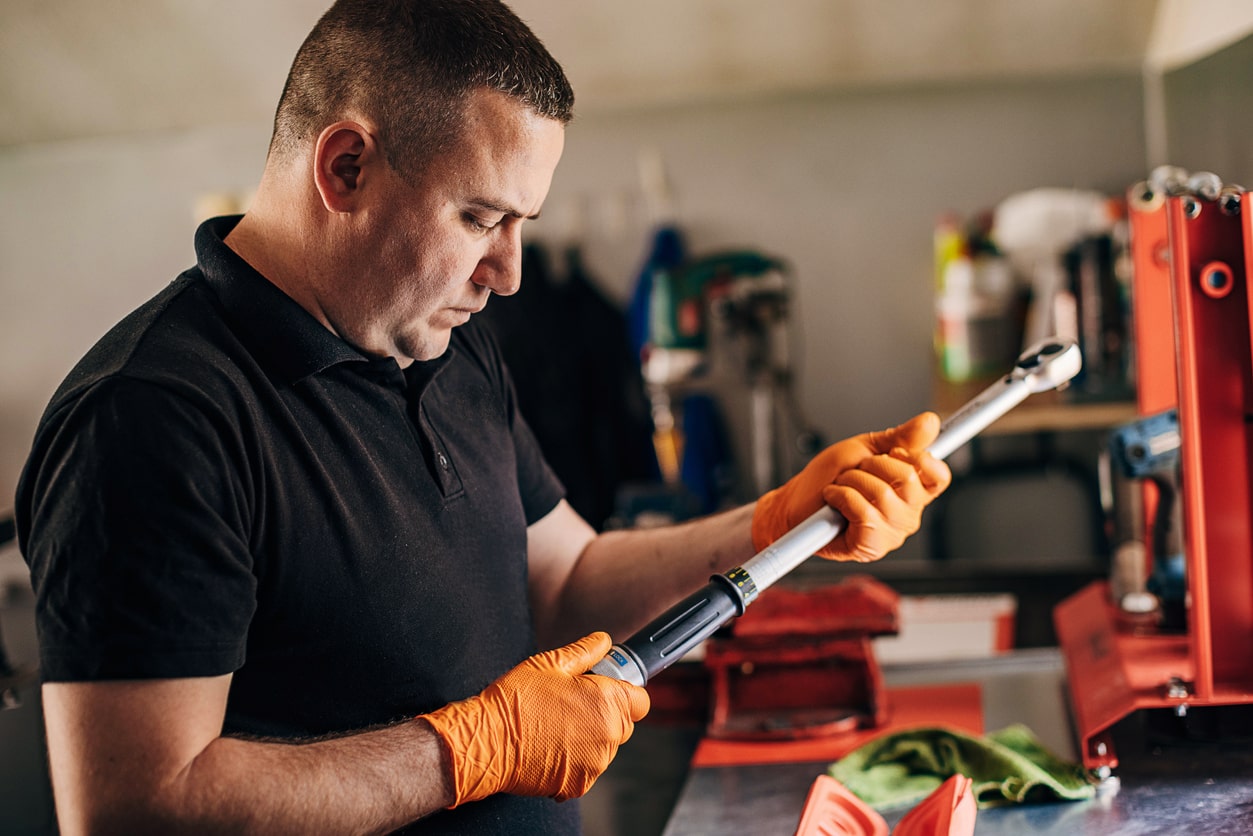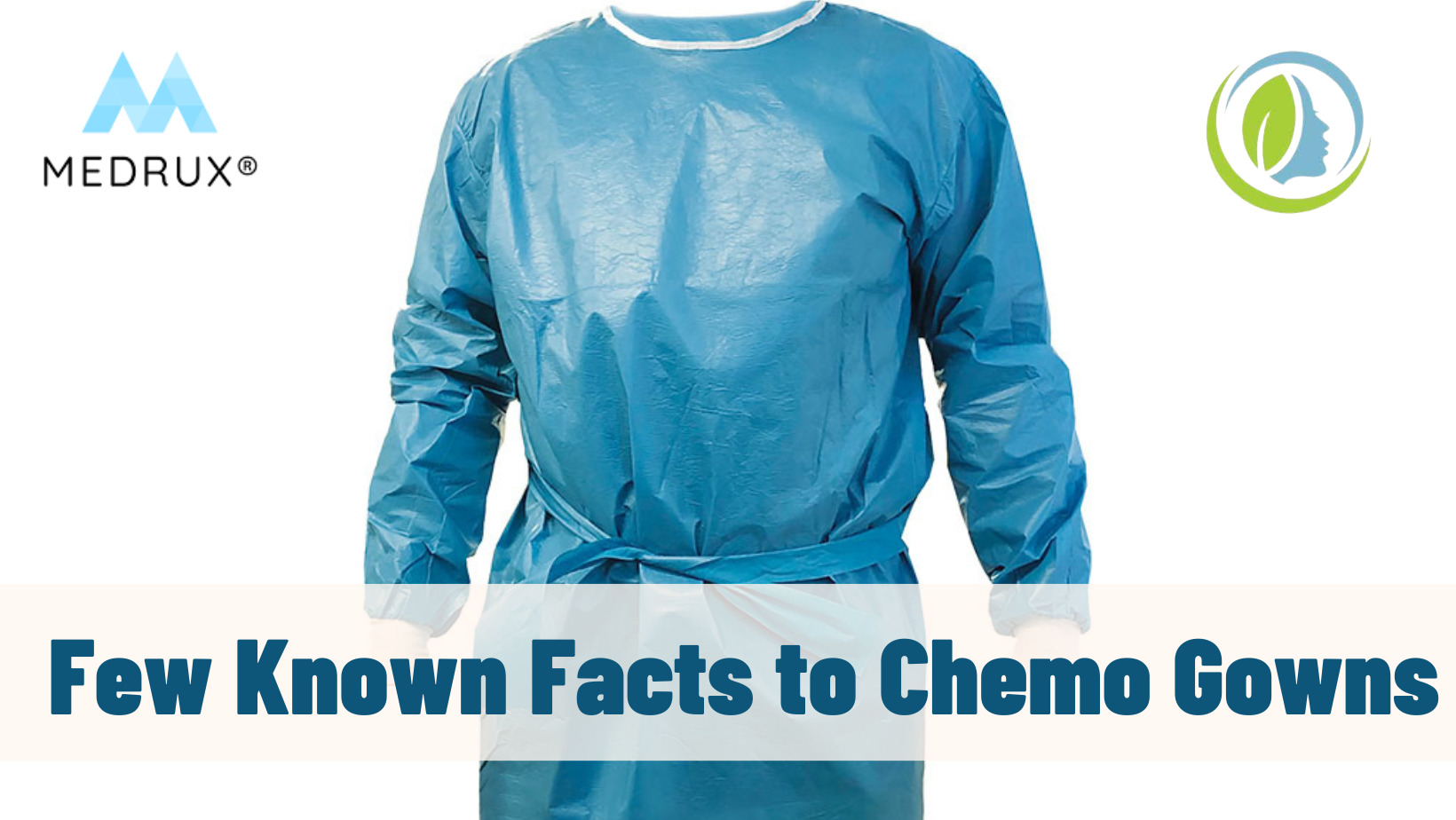You got a new pair of cut-resistance gloves, and you’re checking the box, reading the symbols on it, but you’re confused?
What is level C cut resistance? What do these numbers mean?
You try to Google it; you’re flooded with EN388:2003, EN388:2016, and EN388:2016+A1:2018.
Which EN388-certified gloves should you choose, and what is the difference between the standards?
It doesn’t get any simpler, does it?
Don’t worry, my friend; you are not alone.
Many users are confused when it comes to cut-resistance glove standards and certifications.
However, MedRux strives to keep you informed and up-to-date on everything you need to know about gloves.
Today, we’ll explore the EN388 cut-resistance gloves, their testing methods, and the updates to these standards.
Furthermore, we will help you select the best cut-resistance gloves that suit your needs and offer you the best protection.
Let’s begin
What are cut-resistant gloves?
Cut-resistance gloves are designed to protect against cuts, lacerations, and slashes.
Furthermore, they can withstand tears, abrasions, and punctures.
Therefore, they offer safety and protection when handling sharp objects like knives, blades, and sharp metals.
Moreover, they minimize cut injuries resulting from sharp edges, broken glass, ceramic, razor blades, etc.
As many industries require different levels of cut protection, cut-resistant gloves are used widely among various industries, such as:
- Automotive
- Carpentry
- Construction and demolition
- Metal processing
- Oil and gas refining
- Glass production
- HVAC work (heating, ventilation, and air conditioning)
- Food processing
- Papermaking
- Agriculture and gardening
- Aerospace.
If you are working in any of these fields, you must have encountered the EN388 or ANSI levels.
Let’s find out why they are of high importance and why we need them
Why do we need EN 388 or ANSI-certified cut-resistant gloves?
According to the U.S. Bureau of Labor, cuts and lacerations are the most common type of hand injuries (1)
Although they may not be fatal, they cost a lot in terms of treatment and missed days from work.
The good news is that they’re preventable.
How?
Wearing cut-resistant gloves helps you prevent and minimize these injuries thus keeping your hands safe.
Even though the Occupational Health and Safety Administration (OSHA) recommends using hand protection for occupational hand injuries, including severe lacerations, cuts, and punctures, it doesn’t specify cut protection levels. (2)
Regardless, Cut-resistance gloves are usually classified according to their protection level.
In the U.S., they’re classified by the American National Standards Institute and the International Safety Equipment Association (ANSI/ISEA) 105 standard.
Meanwhile, in Europe, they’re classified by the European Commission’s standard EN 388.
That’s why it’s always a good idea to know about ANSI and EN388-certified cut-resistant gloves for your work.
To understand how these standards are built, we need to understand what makes a glove cut-resistant.
Let’s find out more.
The science behind cut-resistance gloves
Cut protection and resistance are defined by multiple factors, including the material and its weight, the construction of the fabric, the rolling action, and the technology that creates the gloves.
The material provides the strength needed to resist cuts and lacerations.
Cut-resistance gloves are typically made of stainless steel (metal mesh gloves), para-aramid fibers (Kevlar), high-performance polyethylene (HPPE) known as Dyneema or Spectra, glass fibers, or an engineered fiber-metal blend.
These materials have inherited cut-resistance properties that make them widely used and preferred in the world of cut-resistance gloves.
However, it’s not just about the material itself.
The weight of the material (not the overall glove weight) can affect the cut resistance significantly.
The higher the base weight, the higher the cut resistance.
The rolling action and the construction of the fabric.
The fabric of cut-resistance gloves is made of hundreds of filaments that move loosely together in a certain motion.
This motion is called the rolling action or “slipperiness,” and it absorbs the impact of the blade or the cutting tools by letting them slide over instead of cutting through the gloves, hence protecting against the cut risk.
Of course, this motion is different from one material to another.
In addition to the construction and details of the fabrics, such as the type of knit or weave and threads or stitches per inch (the gauge)
The greater the number of stitches, the greater the gauge, and thus the thinner the gloves and vice versa.
More about the manufacturing technology
When creating cut-resistance gloves, manufacturers use technologies to embed glass and steel within the yarn to add hardness, thus adding more cut resistance.
In short, when a material has the inherited strength, in addition to the rolling motion, and is engineered with the hardness of glass or metal, it creates higher cut-resistance levels.
It’s important to understand these aspects because standards such as EN388 apply the same concepts and forces to test the performance of cut-resistant gloves.
Let’s find out how both ANSI and EN388 test these technologies.
What are the two testing methods for cut-resistant gloves?
-
ANSI
The ANSI/ISEA105 standard was first established in 1999 and used to be a 5-level scale, it included the ASTM F1790-97 testing method.
However, in 2005 and 2011, it was revised to include the ASTM F1790-05 methods.
Until 2016, the ANSI tested the cut levels using two different machines, and this caused various and questionable results.
Why?
Because the sharpness of the blades used in the machines was different.
Thus, a new machine is needed to get more accurate results.
So, in 2016, the standard was updated for more accurate identification of cut levels and included the ASTM F2992-15 testing method.
This testing method uses a new machine called a tomodynamometer (TDM).
Simply put, the glove is tested three times with three different forces on this machine, and the levels are determined based on how many grams of pressure are needed to cut through the glove.
Now, ANSI provides nine levels for cut-resistant gloves, from A1-A9, as shown below.
|
ANSI Cut Resistance |
Force (Gram score) | Cut-Hazard | Suitable Applications |
| A1 | 200-499 | Light | Material handling, Small Parts Assembly, Packaging, Warehouse, general purpose, forestry, construction |
| A2 | 500-999 | Light-Medium | Paper industry, automotive assembly |
| A3 | 1000-1499 | ||
| A4 | 1500-2199 | Medium | Appliance manufacturing, Light glass handling, canning, drywall work, electrical, HVAC work |
| A5 | 2200-2999 | Medium-heavy | Carpet and floor installation, Metal fabrication, and handling |
| A6 | 3000-3999 | High | Metal Stamping, window manufacturing, and meat processing |
| A7 | 4000-4999 | Demolition, metal sheet processing, glass manufacturing | |
| A8 | 5000-5999 | Heavy equipment maintenance, gas refining, and sawmills | |
| A9 | 6000+ |
Sharp metal stamping, recycling, and glass manufacturing |
As we can see, the cut resistance levels of A3 and below work well when the cut risk is low or medium.
In contrast, the cut resistance level starting at A4 and going above is usually selected when the cut risk is higher.
Now that we’ve seen the ANSI levels let’s move on to EN 388.
What is EN 388:2016+A1:2018?
EN 388:2016+2018 is the European standard for the requirements, testing methods, and labeling of safety gloves against mechanical risks for hand protection.
The standard includes tests to evaluate abrasion, tear, puncture, impact resistance, and cut resistance by default.
Moreover, it is combined with the EN420:2003+A1:2009 standard for general requirements and testing of protective gloves.
However, the standard wasn’t always this way; it underwent amendments and modifications over the years, from 2003 to 2016 and finally to 2018.
Let’s go through the tests included and the modifications to the standards.
The first one was EN 388:2003.
EN 388:2003 Tests and standards
-
EN388, 6.1 Abrasion resistance
This test is done using an instrument called a Martindale tester.
The glove is rubbed in a circular motion by a head covered with abrasive sandpaper of a fixed size and weight.
Then, the resistance is measured in the number of cycles required to create a hole through the coating and liner on the glove’s palm.
The abrasion resistance is determined on a scale from 1 to 4.
-
EN388, 6.3 Tear Resistance
The glove material is put between the jaws of a strength-testing machine that move apart at a constant speed.
The resistance is measured by the strength needed to tear the gloves’ sample, and it’s also given a scale from 1 to 4.
-
EN388, 6.4, Puncture Resistance
This test is done by holding the gloves’ material firmly between two plates and penetrating it with a thick needle with a standard diameter at a fixed speed.
The puncture resistance is measured by the strength required to pierce the palm, and it’s given a scale from 1 to 4.
-
EN388, 6.2, blade cut resistance
In the 2003 edition, the only method used to test for cut resistance was the “Coup test.”
In this test, the gloves are put under a rotating circular blade of 40 mm diameter that moves back and forth against the direction of movement to measure how many strikes can tear the gloves’ material.
The sample and reference are cut alternately until at least five results are obtained.
The standard or reference material used is cotton canvas fabric.
Then, the cut resistance is calculated as the ratio of the number of cycles needed to cut through the glove testes compared to the reference glove, and it’s called the cut index.
The cut index is a scale from 0–5, depending on the average number of cycles as below.
| Cut-Resistance level | Number of cycles to breakthrough |
| 0 | 0 to 1.2 cycles |
| 1 | >1.2 to 2.5 cycles |
| 2 | >2.5 to 5.0 cycles |
| 3 | >5.0 to 10.0 cycles |
| 4 | >10.0 to 20.0 cycles |
| 5 | >20.0 cycles |
However, they found out that the blade used in the coup test dulls quickly when testing gloves with a high level of steel and glass fibers.
Therefore, the cut scores were considered unreliable, and there was a need for a change.
That’s where EN 388:2016 comes in.
Here’s a summary of the EN388:2003 performance levels of each test:
| Test | Performance level | ||||
| 1 | 2 | 3 | 4 | 5 | |
| Abrasion Resistance (Cycles) | 100 | 500 | 2000 | 8000 | – |
| Blade Cut Resistance (Cut Index) | 1.2 | 2.5 | 5 | 10 | 20 |
| Tear Resistance (Force in Newtons) | 10 | 25 | 50 | 70 | – |
| Puncture Resistance (Force in newtons) | 20 | 60 | 100 | 150 | – |
Changes from EN 388:2003 to EN 388:2016?
In 2016, the EN388:2003 standard was reviewed, and some critical changes were made.
Furthermore, in 2018, they made some technical changes, such as the references to textile standards.
Let’s review the changes and see what we finally have in EN388:2016+A1:2018.
-
Abrasion Resistance.
In EN388:2003, the finished sandpaper had a specific weight, breaking strength, backing, and abrasive size.
In EN388:2016, a new abrasive test paper (Grit 180 Kingspor PL31B abradant paper) is required for the abrasion test.
-
Cut Resistance.
The most significant change to EN388:2003 was introducing the new “TDM-100 test” to measure the cut resistance alongside the coup test.
The TDM-100 test is an ISO 13997:1999 cut test method, similar to the ASTM F2992-15 test method used in the ANSI/ISEA 105:2016 standard.
This resulted in more accurate and reliable test scores.
So, how does the TDM-100 test work?
This test is done on a tomodynamometer (TDM), a rectangular cutting edge (a straight razor blade) that moves in one direction along a straight path with a specified load at a constant speed.
The test is repeated five times using three increasing forces measured in newtons (N).
The blade is changed with each cut, eliminating the risk of the material ever dulling the blade, as it does in the coup test.
When the blade cuts through the material, they calculate the force required to cut through the sample at a specified reference distance of 20 mm in diameter.
This is called the rating or cutting force, and it’s given letters from A to F, to indicate the cut resistance; A indicates the lowest resistance, and F is the highest.
Neoprene rubber is used as the standard to evaluate blade sharpness.
The Coupe Test is still used for lower cut-resistant materials, but now the number of cycles is limited to 60, after which the blade of the machine will be checked for blunting.
Nevertheless, if the coupe test results in a level 3-5, the ISO 13997 test is mandatory.
| Cut Resistance level | Force (Newton) |
| A | 2-5 N |
| B | 5-10 N |
| C | 10-15 N |
| D | 15-22 N |
| E | 22-30N |
| F | Greater than 30N |
-
Impact resistance
The updated EN 388:2016 standard now includes an impact protection test that complies with the EN 13594:2015 standard and is designed only for gloves that protect against impact.
The area of impact (the palm or knuckles) is tested separately in this test.
The area is placed on a heavy block with an energy sensor and impacted with a 2.5-kg flat-faced striker from a specific height to provide an impact energy of 5 J.
This is done four times on four different gloves, and the sensor detects the energy.
For the gloves to pass the impact test and be marked with “P,” the energy transmitted should be ≤7.0kN with no single result ≤9.0kN.
Otherwise, it will be marked with an “F” for failing the impact test.
However, gloves that do not claim to offer impact protection will not be subjected to this test, and the rating space will either be given an “X” or be left blank.
-
Users instruction
In EN388:2016+A1:2018, they added extra requirements for the user instructions to be supplied with the gloves, including:
- Indicating which area of the gloves was tested for impact resistance.
- Highlighting that impact protection doesn’t apply to the fingers.
- Gloves with level 1 tear performance or higher must include a warning that they should not be worn if there is a risk of entanglement with moving machine parts.
- When the gloves are marked with both cut tests, they should include this statement: “The circular blade cut test results are only indicative, whilst the straight cut resistance test is the reference performance result.”
The bottom line,
- The new EN388:2016+A1:2018 regulations have changed abrasion and cut test methods.
- Cut resistance is now tested by either the coupe test, the ISO test, or both in the case of blade blunting.
- If both cut resistance tests are used, ISO 13997 should be the official classification
- Impact resistance tests have been introduced.
Now that you know it all, how do you read the labels on the gloves?
Marking of the EN 388 gloves:
All safety gloves are marked with a pictogram to indicate their cut levels.
The EN388 pictogram now has 4 numbers and a letter or two that let you know the properties of the gloves.
The following is from the left.
- The first number (1-4) indicates the abrasion resistance.
- The second number (1–5) represents the coup test cut level.
-
- The third number (1-4) is the tear resistance.
- The fourth number (1-4) is the puncture resistance.
- The letter in the 5th position (A-F) is the TDM-100 cut resistance
- The letters in the final positions (F or P) are for impact resistance.
If an “X replaced any numbers or letters,” the test was either not performed or is not applicable.
Alternatively, if replaced with “0,” level 1 couldn’t be achieved.
Finally, the pictogram will not be used if the glove does not meet at least Level 1 or Level A for at least one test category.
With all of this in mind, now you must be asking yourself what the impact of these changes is on how you choose your EN388 cut-resistance gloves.
Modified standards and effect on users
EN388 is used by protective glove manufacturers, test houses, regulators, and suppliers.
Furthermore, they are highly important to health and safety managers, consultants, inspectors, and risk assessors.
And, of course, it is crucial for users who require safety gloves to protect their hands against cuts.
So how do the changes impact the users and everyone relevant to these standards?
Using TDM tests by ANSI and EN results in the global harmonization and a more reliable and in-depth understanding of the glove’s properties.
Therefore, it’s easier to decide on the right cut-resistance level.
However, introducing the second rating to the EN388:2016 cut resistance standard can confuse some users, who might need further explanation.
Don’t worry; we’ve got you covered here.
You might still be wondering if there are gloves that are still labeled with the old standards of EN 388:2003.
The answer is yes.
However, this doesn’t make them less protective.
Because it’s not the glove’s performance that has changed; it’s the way it’s being tested.
What’s more, you may think that the higher the gloves’ level, the more reliable they are.
However, it’s not always the case.
The right glove is the one that offers the best protection against the proper risk you face as well as the features you need precisely.
So, whether it’s the new labeling or the old one, you should be completely sure that the gloves you pick are the right ones for the task.
Let’s find out how to choose the right type of cut-resistance gloves.
How to Choose the Type of Cut Resistant Gloves for the Task?
Choosing suitable gloves is essential because wearing the wrong ones can be as bad as not wearing any.
However, this isn’t an easy process; there are many factors you may need to consider before deciding on buying one!
Perhaps the most important factor of them all is risk assessment.
Why?
Because by performing a risk assessment, you can identify the potential hazard, which will help you understand the level of protection you need and guide your selection of the right cut-resistant gloves.
Let’s dig deeper into more factors.
- The material
As mentioned above, the materials have inherited strength and cut-resistance properties.
Cut-resistant gloves are classified according to the material they’re made of.
Metal mesh gloves are made of interlocking rings forming a web or mesh of stainless steel.
They’re also called chainmail gloves, and they offer high cut levels.
Therefore, their typical uses are in food processing applications as they’re worn under disposable gloves to protect against cuts when using knives for things such as cutting or deboning meat.
On the other hand, they tend to limit the hand’s mobility.
-
Kevlar Gloves
Kevlar is a synthetic para-aramid fiber that is flexible, lightweight, and 5x stronger than steel.
Moreover, it can resist flames up to 427 °C.
For all these reasons, they are one of the most commonly used cut-resistant gloves and it’s the go-to choice for glass handling, the automotive industry, and grilling gloves.
-
Dyneema Gloves
These gloves are made of ultra-lightweight high-performance polyethylene (HPPE).
Therefore, they are flexible and offer more comfort and dexterity. Moreover, they’re considered the world’s strongest fiber, as it is 15x stronger than steel.
-
Spectra gloves
These cut-resistance gloves are also made of ultra-lightweight HPPE.
What’s so special about them is that they work perfectly in wet conditions. Therefore, they are highly valued in the food industry.
-
Glass fiber gloves
Glass fiber is smooth and lightweight and usually offers high tensile strength.
However, fiberglass can break when used for a long time, compromising cut resistance.
As a result, these gloves aren’t just made of fiberglass; they’re usually blended with steel to provide the best cut resistance.
-
Fiber-metal blend gloves (engineered yarn)
These gloves are made of woven fabric that blends Spectra, Kevlar, and stainless steel.
They are engineered to be highly durable, offer incredibly high cut resistance levels, and maintain comfort and dexterity.
Will you choose EN388 or ANSI levels?
Even though the ANSI/ISEA 105:2016 and EN 388:2016 cut standards use the same testing method, they are not interchangeable.
For example, EN ISO cut level D cannot claim to be ANSI level A4 without proper testing.
Why?
They are not equivalent because their scores use different units of force measurement (ANSI in grams and EN388 in Newtons).
So, you should be familiar with both testing methods before deciding.
For people who need the highest level of cut protection, such as workers in heavy construction, mining, ironworking, etc., you should look for high cut resistance levels.
- ANSI-A5 or more
- EN 388: E to F
Meanwhile, for jobs that require good cut resistance with high levels of dexterity, such as recycling plants, electrical work, home maintenance work, etc., you should go for:
- ANSI: A3-A5
- EN388: C to E
Finally, if your job has a shallow risk of cuts or lacerations, it’s safe to go with lower cut levels in ANSI and EN388.
Comfort and flexibility
You will probably use the gloves for a long time, so they must be as comfortable as possible.
Additionally, performing tasks can require a certain level of flexibility and hand dexterity, especially for precise and delicate cuts.
That’s why gloves with thin linings can be a good option for comfort without compromising flexibility.
Grip and coating
Will you use gloves in wet, dry, or oily conditions?
Working in oily conditions may require coated gloves to keep your hands from slipping and give you a good grip.
So, how can the coating affect the cut resistance?
Some coating materials are more cut-resistant than others, and thicker coatings mean more materials to go through.
Additionally, the coating highly affects the grip, so this means less chance of slipping and accidental tears.
Although the coat shouldn’t be perceived as extra protection against cuts, it’s important to consider when buying your next pair of cut-resistant gloves.
Cut-resistance gloves are usually coated in nitrile, latex, polyurethane (PU), or polyvinyl chloride (PVC).
They offer superior resistance to snag, cut, puncture, and abrasion.
The Size
Cut-resistance gloves should fit properly.
Because if it’s too big, it may compromise your safety and cause more damage, and if it’s too small, it will be uncomfortable.
That’s why it’s crucial to choose the right size.
Breathable
If your gloves make you itchy, hot, or uncomfortable, making your hands sweat all the time, it’s not the best choice, isn’t it?
Choosing breathable gloves gives you comfort and ease while doing your job.
The coating also contributes to the breathability of the gloves; the lighter the coating, the more breathable and comfortable the gloves are.
Conclusion
To buy the best cut-resistant gloves, one must be familiar with ANSI and EN388 standards and their modifications.
We hope you now understand both of them and can choose the best cut protection for you!
Don’t hesitate to leave a comment if you have any further inquiries about the EN388 or cut-resistant gloves.







